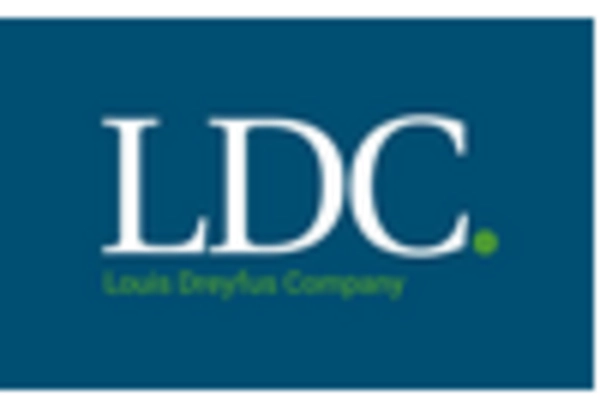Health Consciousness Among Consumers
The increasing awareness of health and nutrition among consumers appears to be a pivotal driver for the legumes market. As individuals seek healthier dietary options, legumes, known for their high protein and fiber content, are gaining popularity. Recent data indicates that the consumption of legumes in the US has risen by approximately 15% over the past five years. This trend suggests that consumers are actively incorporating legumes into their diets to enhance their overall health. The legumes market is likely to benefit from this shift, as more people recognize the nutritional advantages of legumes, including their role in reducing the risk of chronic diseases. Consequently, health-conscious consumers are expected to drive demand for various legume products, further propelling growth in the market.
Expansion of Plant-Based Food Products
The proliferation of plant-based food products is significantly impacting the legumes market. As more consumers transition to plant-based diets, the demand for legume-based alternatives is on the rise. This shift is evidenced by the introduction of various innovative products, such as legume-based pasta and snacks, which have gained traction in the market. Recent statistics reveal that the plant-based food sector has experienced a growth rate of 27% in the past year, with legumes being a key ingredient in many of these products. The legumes market is likely to see continued expansion as manufacturers respond to consumer preferences for plant-based options. This trend indicates a promising future for legumes, as they become integral components of a diverse range of food products catering to health-conscious and environmentally aware consumers.
Growing Interest in Sustainable Agriculture
Sustainability has emerged as a crucial consideration in agricultural practices, influencing the legumes market. The push for environmentally friendly farming methods is prompting farmers to adopt practices that enhance soil health and reduce carbon footprints. Legumes, known for their ability to fix nitrogen in the soil, play a vital role in sustainable agriculture. This characteristic not only improves soil fertility but also reduces the need for synthetic fertilizers. As a result, the legumes market is witnessing a surge in interest from both producers and consumers who prioritize sustainability. Reports indicate that the market for organic legumes has expanded by 20% in the last year, reflecting a growing preference for sustainably sourced products. This trend suggests that the alignment of legumes with sustainable agricultural practices could significantly enhance their market presence.
Increased Availability of Legume-Based Products
The growing availability of legume-based products in retail and food service sectors is a notable driver for the legumes market. As consumer interest in legumes rises, retailers are expanding their offerings to include a wider variety of legume-based items, such as canned beans, lentils, and chickpeas. This increased accessibility is likely to enhance consumer adoption and consumption of legumes. Recent data shows that the number of legume product launches has surged by 40% in the last year, indicating a robust response from manufacturers to meet consumer demand. The legumes market is expected to continue benefiting from this trend, as greater product availability encourages experimentation and incorporation of legumes into everyday meals. This dynamic suggests a promising outlook for the market as it adapts to evolving consumer preferences.
Rising Global Population and Food Security Concerns
The increasing global population is creating heightened concerns regarding food security, which in turn is influencing the legumes market. As the demand for protein sources escalates, legumes are being recognized as a sustainable and efficient option. They require less water and land compared to animal protein sources, making them an attractive alternative in the face of resource constraints. The legumes market is poised to benefit from this trend, as governments and organizations emphasize the importance of legumes in achieving food security. Projections suggest that the demand for legumes could increase by 30% over the next decade, driven by the need for sustainable food sources. This scenario indicates that legumes may play a crucial role in addressing The legumes market.
















